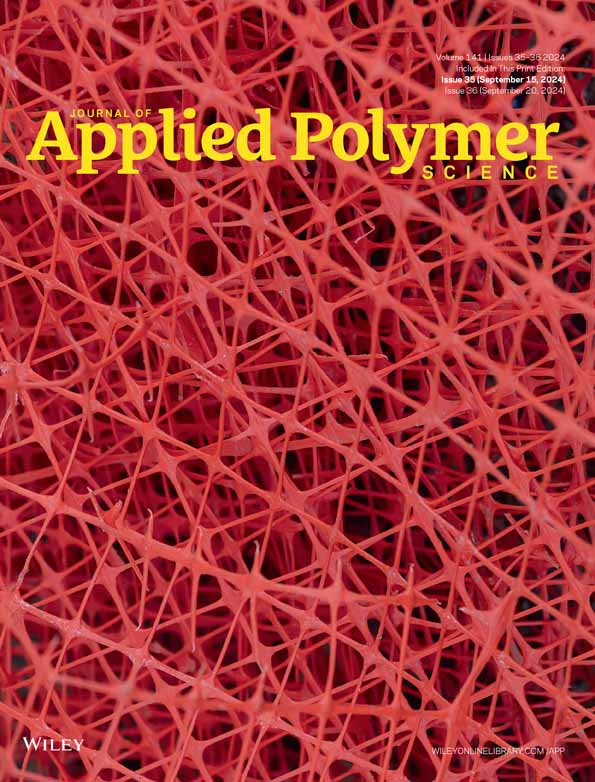Development of poly(vinyl acetate) adhesive with hot water resistance via constructing semi-IPN/IPN structures with hydroxymethylated lignin
Jianchun Li and Guoliang Chen contributed to this work equally.
Abstract
Poly(vinyl acetate) (PVAc) adhesive is often used in the wood industry because it can be rapidly cured at room temperature to produce a high bonding strength. However, PVAc is a linear polymer susceptible to thermal creep, so it will fail to bond in high temperature and humidity environments. In this study, the hot water resistance of PVAc adhesive is improved by introducing lignin with a complex structure to construct multiple cross-linked networks with a high cross-link. However, due to the large steric hindrance, the reactivity of lignin hydroxyl groups is low. In the process of preparing adhesive, alkali lignin is hydroxymethylated to improve its reactivity, and then 4,4′-diphenylmethane diisocyanate is used as a cross-linker to construct interpenetrating and semi-interpenetrating polymer networks. The hydroxymethylation occurs through the reaction of formaldehyde with lignin under alkaline conditions. Optimal reaction conditions include a reaction ratio of 0.20, a reaction temperature of 80°C, and a reaction time of 3.5 h. On those conditions, the bonding strength of the lignin-based PVAc adhesive reaches 1.8 MPa after hot-water treatment. Therefore, the lignin-based hot water-resistant PVAc adhesive has shown good application potential in high temperature and humidity environments.
CONFLICT OF INTEREST STATEMENT
The authors declare no conflicts of interest.
Open Research
DATA AVAILABILITY STATEMENT
The data that support the findings of this study are available from the corresponding author upon reasonable request.




